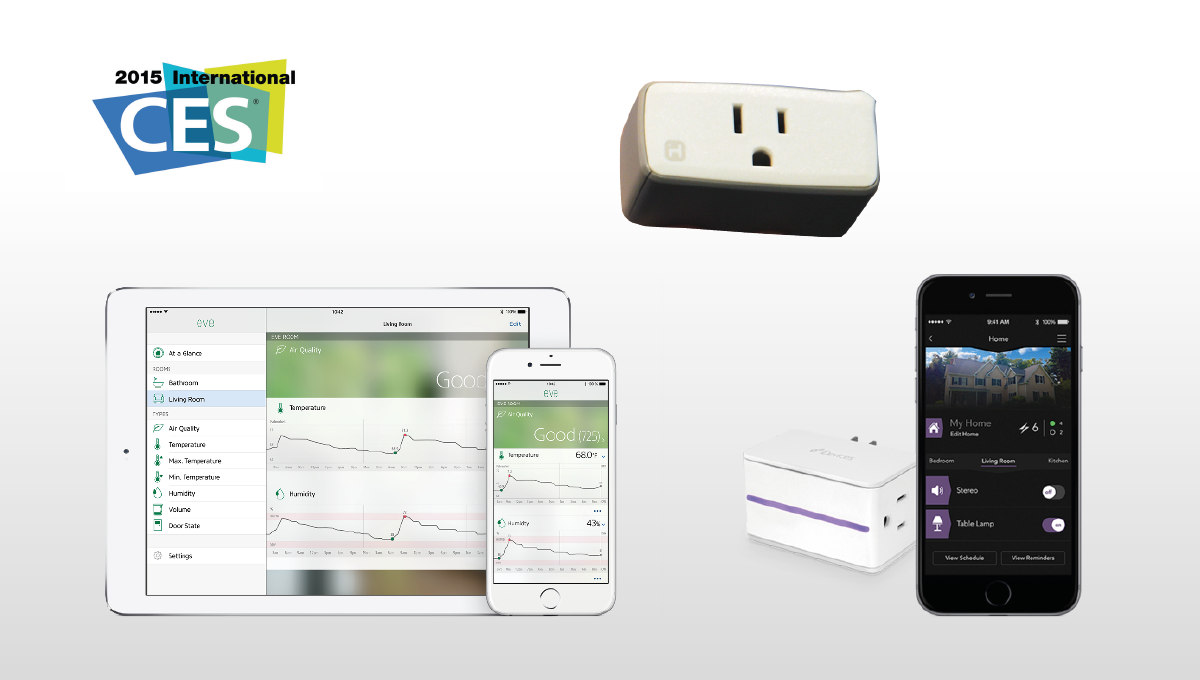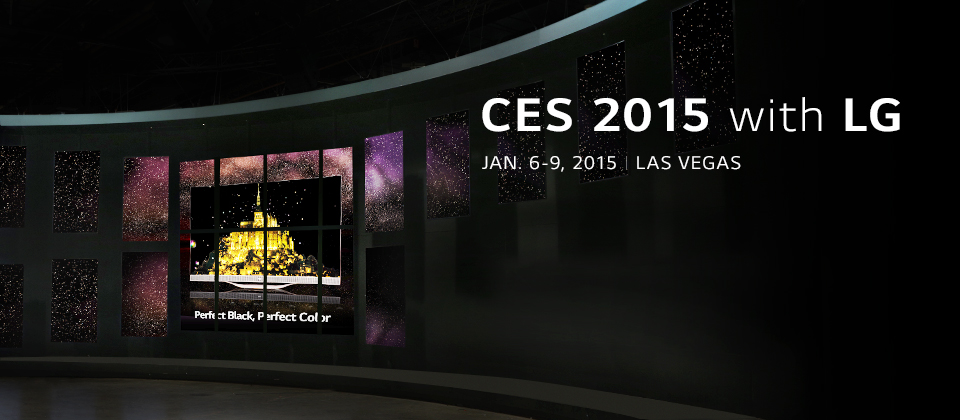We chatted with Janina from Netatmo to learn about their Welcome smart camera for home surveillance.
Stay tuned and follow us on Twitter @ipglab for more CES coverage throughout the whole week.
We chatted with Janina from Netatmo to learn about their Welcome smart camera for home surveillance.
Stay tuned and follow us on Twitter @ipglab for more CES coverage throughout the whole week.
Take a look at the futuristic smart home controller Ring by LogBar–it works like pure magic.
Stay tuned and follow us on Twitter @ipglab for more CES coverage throughout the whole week.

Apple may have grown too big to grace an industry trade show like CES, but its presence is still felt this year as many smart home devices supporting their HomeKit smart home platform. Here are the top three highlights:
Switch from iOS accessory maker iDevices debuts at CES 2015 as the world’s first HomeKit-certified products. It is a smart power switch makes it easy to control the connected home appliance using your voice, no hub required. It does, however, need the companion iDevices Connected app to personalize the device with Siri voice commands.
Simiarly, iHome’s first Apple HomeKit product, SmartPlug, will enable iOS users to control any connected device using Siri. A companion app called iHome Control tied into HomeKit will let you turn devices on and off just by speaking into your iPhone or iPad.
Eve is a complete line of products and sensors from IoT maker Elgato that will enable users to monitor your home and provide control with a Siri voice command. Two products, a HomeKit-enabled switch named Eve Energy and the Eve Door & Window Sensors are slated for release in following months.
Update 2015/01/08: two more devices added.
GridConnect ConnectSense Smart Outlet
This GridConnect ConnectSense links to iOS devices via HomeKit, features its own rule-based software, and speaks the ZigBee Wi-Fi wireless protocol.
Another piece of hardware on the Apple HomeKit nice list is the MyQ Smart Garage. It lets you open and close your garage door from anywhere with an Internet connection, set custom alerts and remotely monitor whether your garage door is open.

Read original story on: VentureBeat
Internet of things is undoubtedly a hot topic at this year’s CES, and LG is one of the many companies trying to bring the connected things home.
Announced earlier today at its CES press event, the South Korean company is launching a series of ThinQ-branded home appliances, including smart refrigerators, dishwashers, laundry machines, and ovens. The new washer, for example, comes with NFC and WiFi connectivity, allowing users to upload special washing cycles, monitor those cycles, and receive alerts when the load is finished.
Header image taken from www.lg.com
Keep watching ipglab.com as we continue to cover CES 2015.
As consumers get more comfortable using smart devices we expect more such platforms to enter the market.
Read original story on: PSFK
Checking weather just got a lot more fun. Made by UK creative agency Uniform, Weather Systems is a set of three charmingly designed gadgets that display real-time weather information wirelessly transmitted via the Internet. The three gadgets showcased include a block of pins that movs as it rains, a wheel that changes color depending on temperature, and a weather vane that spins according to wind direction.
Read original story on: The Verge
Apple will soon allow third-party manufacturers to integrate its Lightning port directly into their Apple accessories. Apple has already opened up the Lightning connection to headphone makers for better audio quality, but it will be very interesting to see what this newfound connectivity can bring to Apple devices in areas like the connected car or the Internet of Things.
As The Verge writer David Pierce pointed out in his Microsoft Band review, the newly launched fitness tracker—like dozens of other wearables currently available—generates a boatload of biometric data, providing users with a heightened sense of the quantified self. But beyond that, it doesn’t do really much, leaving users bewildered and lacking insights they can act on. In his own words:
That’s the thing about all fitness trackers: even the most powerful ones are only measuring internal data, data about me. … If the Band knows my heart rate and my sleep stage, why can’t it wake me up at the perfect moment in my sleep cycle?
Indeed, “what am I supposed to do with all that data” has become a question frequently asked by the early adopters of wearable tech. Wearable makers need to go beyond basic functions such as tracking, syncing and data-gathering. Only by fully exploring the actionable insights the data can provide, or by building a rich narrative for the users to engage with, will wearables find a mass audience.
Header image taken from the linked review on The Verge
Read original story on: Business Insider
OnBeep, a year-old startup based in San Francisco, just unveiled its first hardware product – a real-time wearable communicator named Onyx. Inspired by the futuristic walkie-talkie featured in Star Trek, it pairs to a smartphone via Bluetooth and works with Wi-Fi or data service. Sporting a slightly bulky but lightweight circular design, Onyx can support up to 15 people in real-time group conversations—an interesting take on bringing group messaging into the physical world.